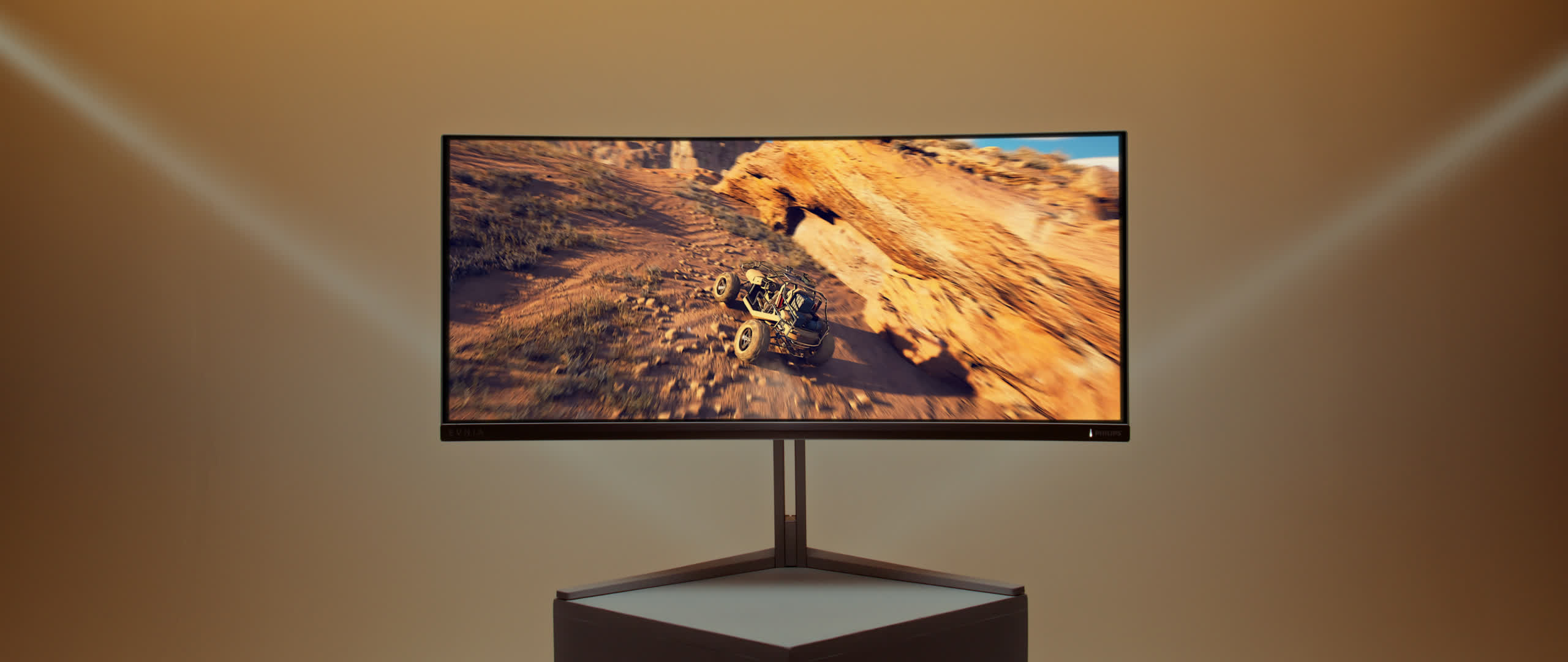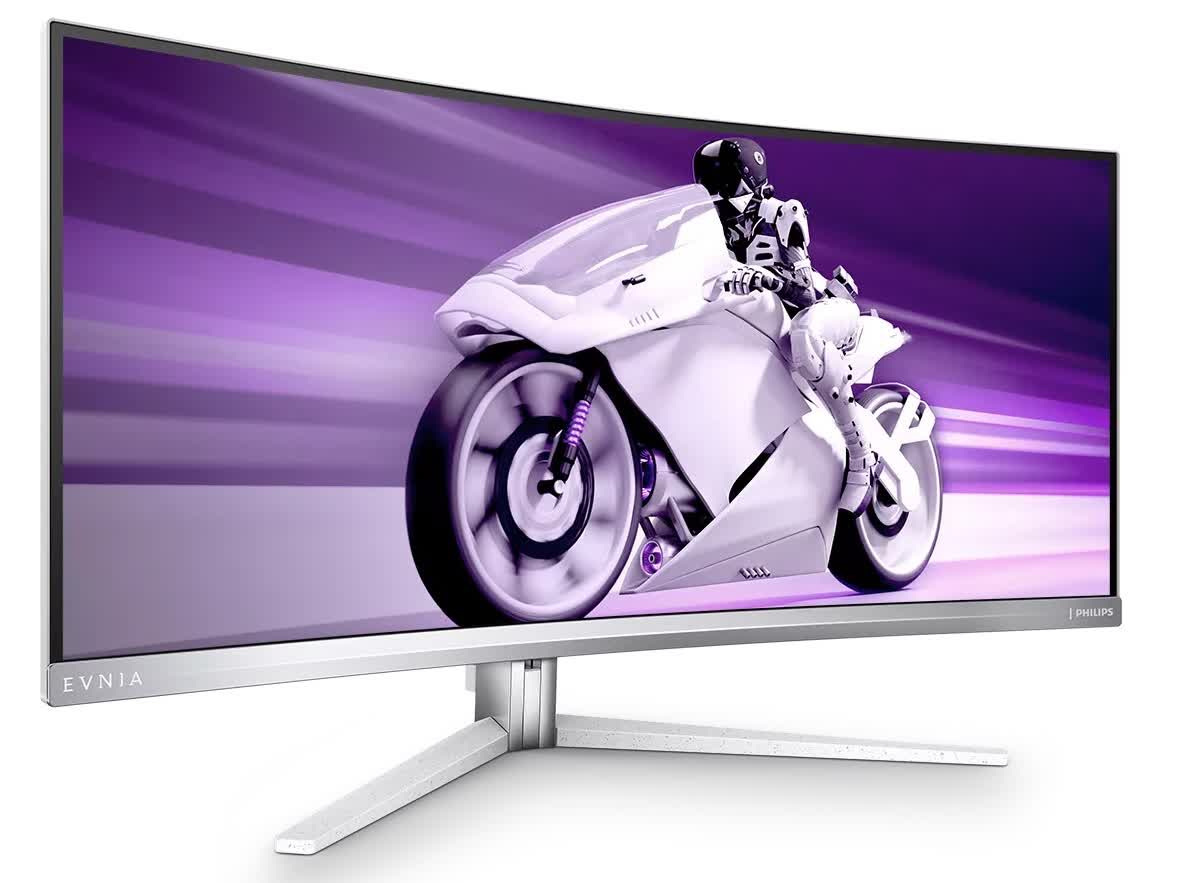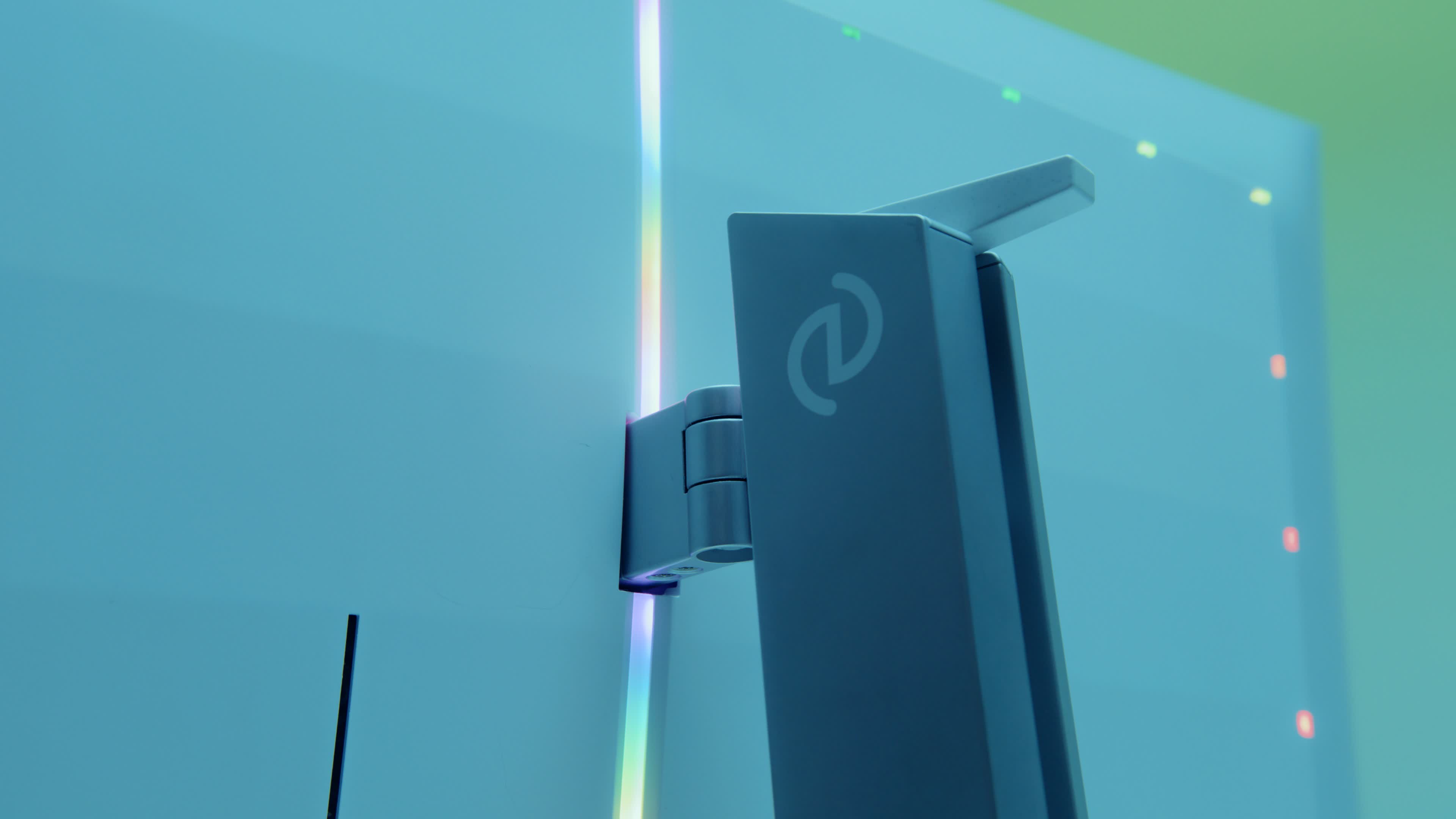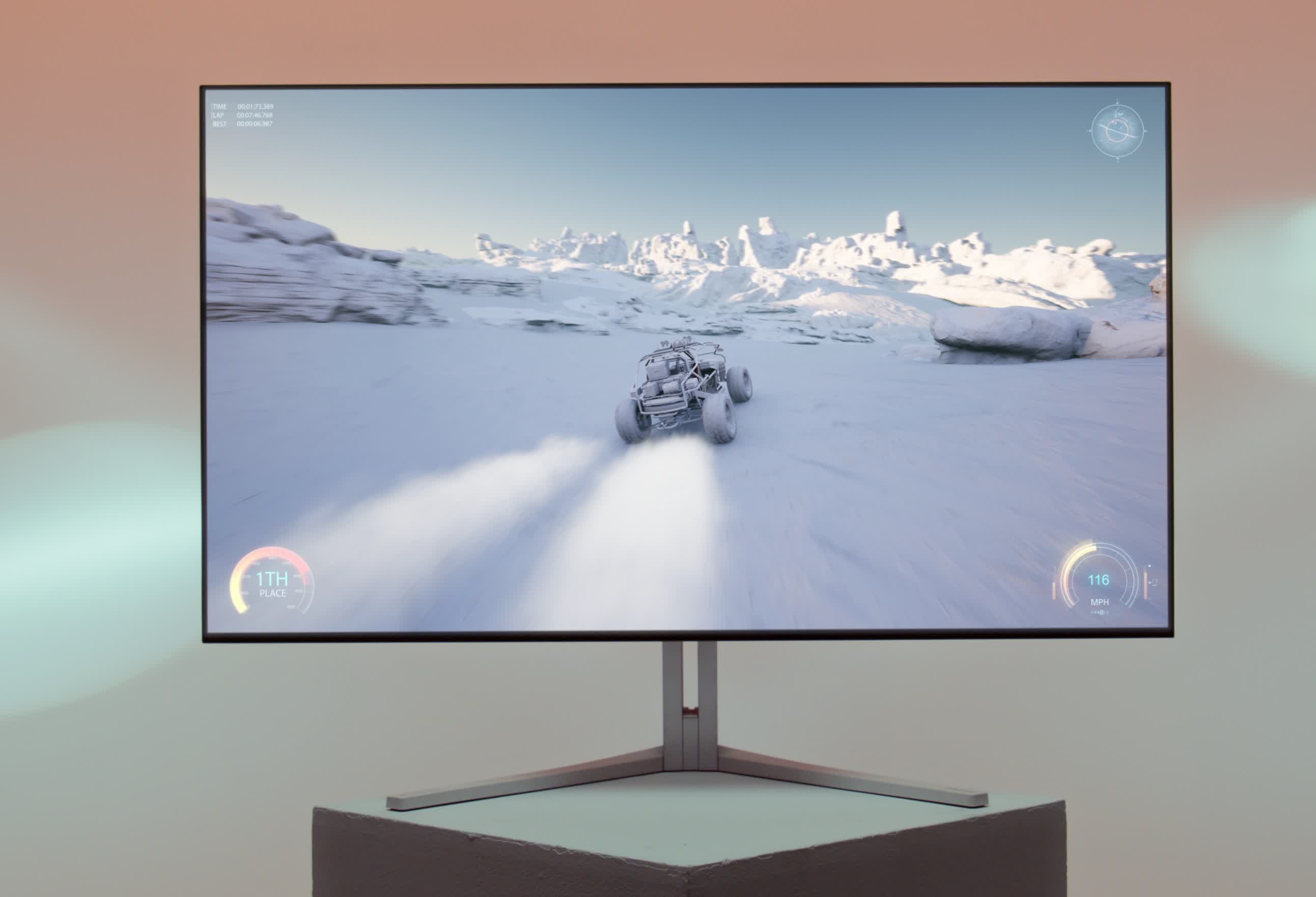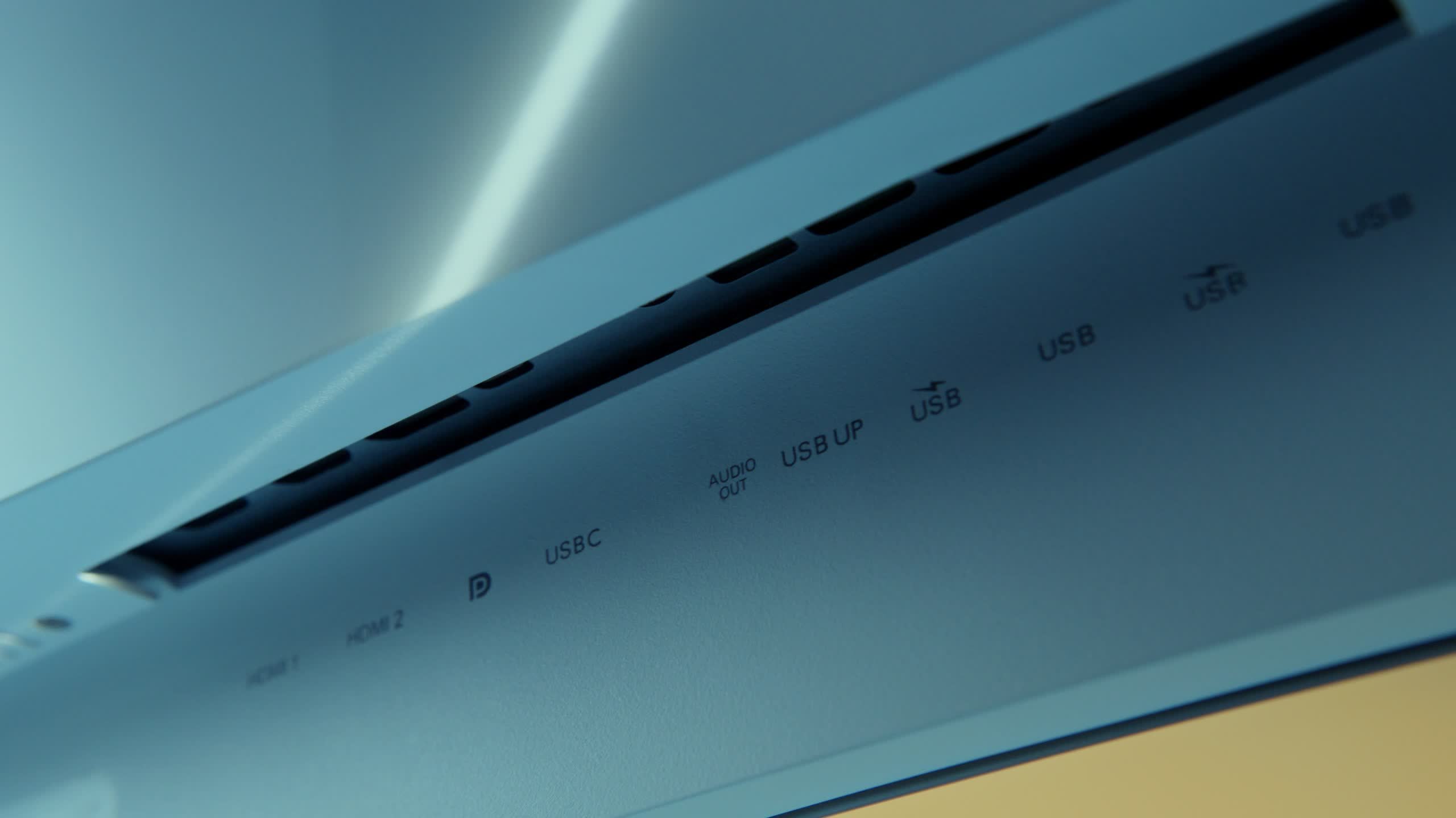What just happened? Philips has released a pair of OLED gaming monitors under its Evnia brand that boast high refresh rates and resolutions. They're also hefty units (34 inches and 42 inches), feature low input lag, 10-bit panels, and, in the case of the smaller model, a curved display.
Starting with the Philips Evnia 34M2C8600 (top), this 34-inch QD-OLED display is another to combine organic light-emitting diode (OLED) panels and Quantum Dot (QD) technology. The Alienware AW3423DWF 34, which we awarded a score of 90 in our review, is one of several QD-OLED monitors on the market. One of their advantages is that they're supposedly less susceptible to burn-in than other OLED panel types.
The curved monitor has a 3440 x 1440 (21:9) resolution with a maximum refresh rate of 175Hz and a 0.1ms Grey to Grey response time. It also carries VESA's Display HDR True Black 400 stamp, has 99.3% coverage of the DCI-P3 color gamut, a Delta E of less than 2, and comes with features such as a USB-C port, a KVM switch, and a height-adjustable stand.
The other monitor, the Philips Evnia 42M2N8900, offers a 4K (3840 x 2160) resolution on its 42-inch OLED (not QD-OLED) display that can be overclocked to 138Hz. Like its smaller sibling, it comes with a 0.1ms GtG response time. Buyers also get a peak brightness of 450 nits and USB-C connectivity.
Other shared features include AdaptiveSync, Philips Ambiglow lighting system for adding more immersion to games and movies, DTS sound, and 10-bit panels for exceptional color accuracy.
The 34-inch Philips Evnia 34M2C8600 is priced at £1,149 in the UK. That converts directly to $1,381, though the United Kingdom's taxes mean electronic items are always more expensive in the country. For comparison, the Alienware AW3423DWF is $1,100.
The 42-inch Philips Evnia 42M2N8900 is £1,499, or $1,804. A close comparison to that model would be the Asus ROG PG42UQ, which is $1,400.
Both the Philips Evnia monitors are now available in Europe. No word yet on a US release or official dollar prices.
https://www.techspot.com/news/97665-philips-releases-34-inch-42-inch-oled-gaming.html
